Woke up early to catch the 7am bus out to Sitio Guazapa for our horseriding tour on Cerro Guazapa with Guazapa Tours.

A 163 bus (love how buses in El Salvador have route numbers) came along at 6:50am so we got on that one and headed out along the highway. Then, after a while, the bus turned off the highway onto a very slow dirt road … It poked its way up there for about 20 minutes and eventually we asked whether we had missed our stop. The guy assured us that we hadn’t, it was coming up after we got back to the highway. Soon after, the bus does a 3 point turn, stops for about 5 minutes, then heads back the way it came down this dirt road. I made a bet with the two others I was travelling with that our stop was about 50 metres past where we turned off the highway for this enormous detour (we were also now 30 minutes late). Back on the highway, 50 metres down the road, they tell us that it is our stop. Seriously? Why didn’t you tell us at the turnoff and say it was only 50 metres further? We would have walked!
The good thing was that Orlando, our guide, was still waiting for us with our horses when we finally arrived! I was the brave one and chose Bilcho, the male horse, to ride (the other horses were female). Turned out to be the best decision! Bilcho is the only horse I’ve ever ridden on one of these things that actually wanted to walk and go places. It was an absolute pleasure to not constantly have to be trying to figure out how to make the horse go!
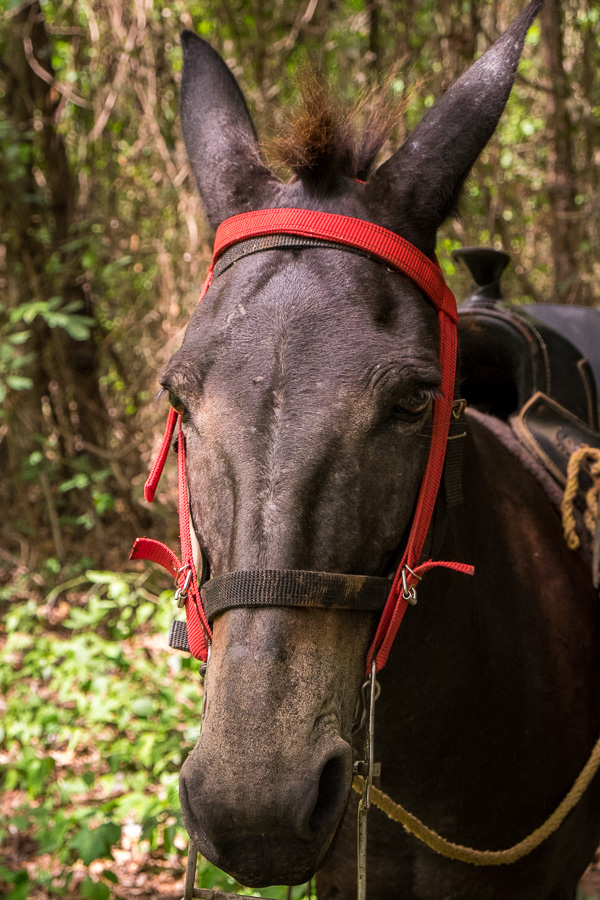
The other two horses were not quite so keen, and one of them had an almost-1-year-old foal who decided to come with us and would try to get milk at every opportunity!

The first ~45 minutes of the horse ride was along a road past fields that were being prepared for the sowing of corn and frijoles (beans). Orlando, it turns out, is actually a doctor – a GP – who takes tours in the morning with Guazapa Tours (another local cooperative of tour guides that started 12 years ago and is still going strong), and sees patients in the afternoon. It was very easy riding and nice and shady given we’d started out so early.
Our first stop was an old Añil (indigo ink) processing place called an “obraje”. There are apparently still Añil plants up on the highest reaches of Guazapa but we didn’t get the opportunity to see them on this tour. Basically, the leaves were collected and crushed (with water, hence why it is located next to a river) in the large basin in the picture. This was then strained into a smaller basin for collection.
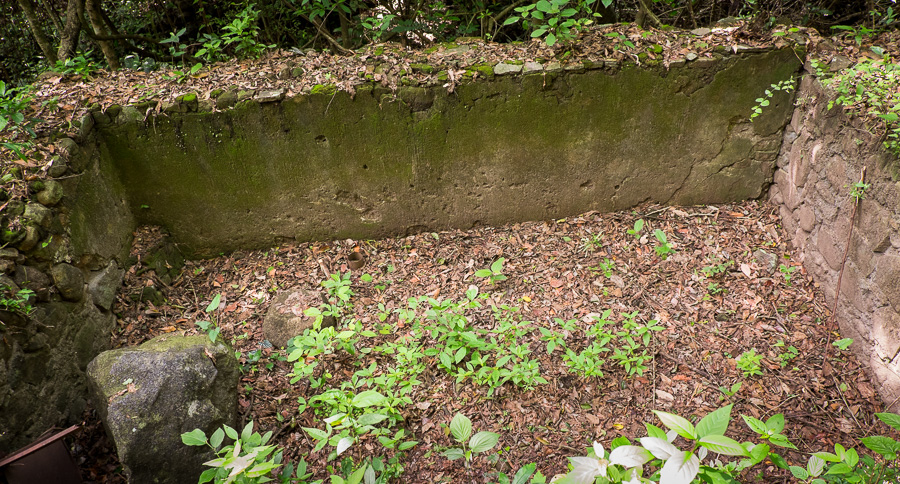
The road eventually came to a stop and the horses continued up a fairly steep and rocky trail. This made the horse riding more adventurous as you had to keep an eye out to make sure you wouldn’t lose your head on a low branch or lose a leg as the horse brushed past a tree. We continued for about 15 minutes and then dismounted in a clearing. This is where we started learning about El Salvador’s civil war that ran from ~1980 to 1992, and was essentially the people against the Government (and hence army). The war began because the people were barely surviving – all the land was owned by a few rich people who, if the workers were lucky, would give them enough food for their family to live on but nothing more. The civil war was about the redistribution of land amongst all the people to allow everyone to be able to support themselves and not rely on the goodwill of the wealthiest Salvadoreños.
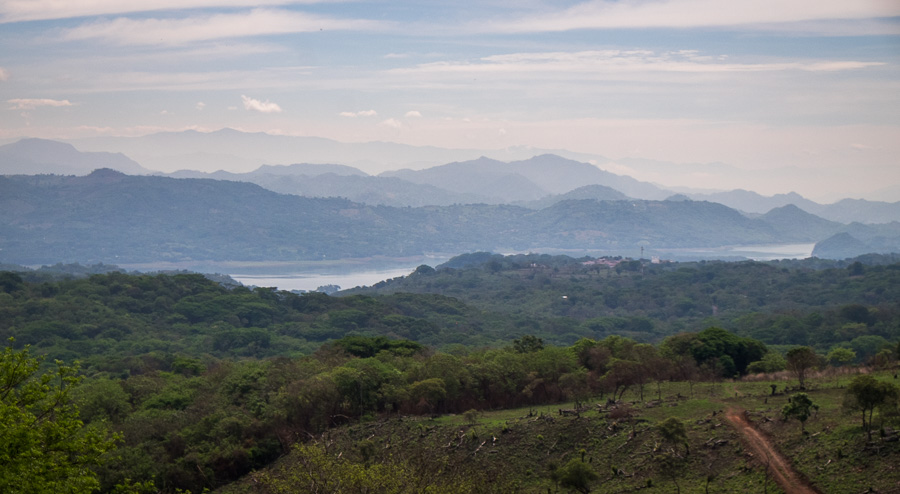
It’s really quite staggering how many people were killed in uncounted massacres during this conflict, and the first civil war sites we saw on the mountain were specifically built so that people could be hidden from the army. In particular, there are many Tatús scattered around the mountain. These are small underground “bunkers” that could hide between 1 and 12 people (depending on the size) while they waited for the danger (the army) to retreat from the area. Once the people were inside, the entrance would be covered with vegetation and other guerrillas would sneak them food and water – they could be in there for several days. This one fit 12 people and would have been quite cramped!

We also visited the site of the guerrilla hospital – about a 1.2km hike (round-trip) from where we left the horses after we had backtracked some of the way down the mountain. There were no buildings constructed as they would have been easy for the army to find, but rather small tents were used when needed and the rest was just out in the open air. Apparently the army never found this place.

It just looks like forest at first glance, however, exploring further, there were several examples of lookout points, trenches, and the sleeping areas were still picked out in stone. There were also a few vestiges scattered around the site like old shoes, some cloth and a radio.

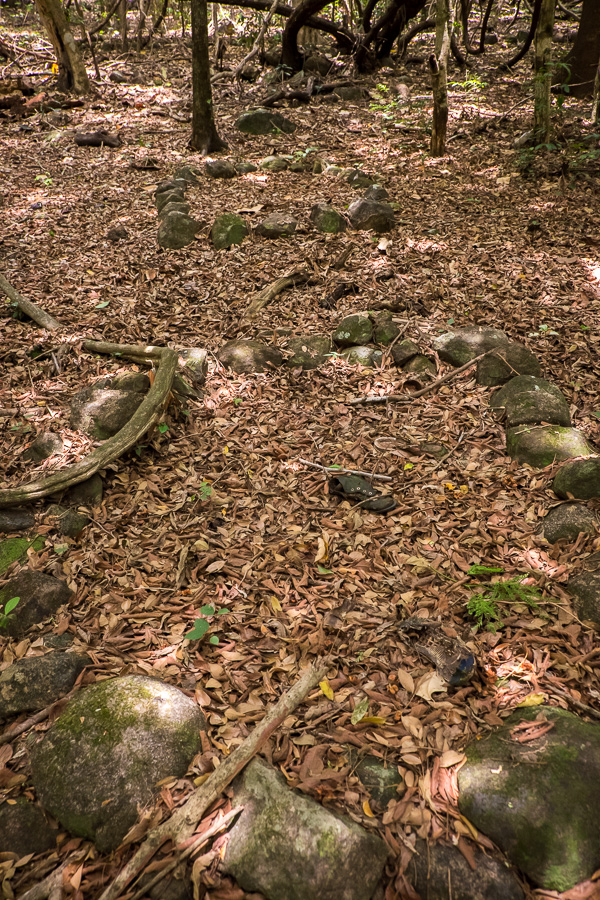
Orlando was telling us some of the stories about the the hospital (the first operations had to be done without anesthetic because it was extremely difficult for the guerrillas to get medical supplies), the doctors (one from Cuba, one from the US) who worked there, and others – like his grandmother – who supported its operation by running messages and cooking food. Hard to imagine that all this was only 30 years ago!
We returned to the horses and backtracked the same way we came – about another 40 minutes in the saddle. It was a wonderful tour, and I asked so many questions I think my companions were wishing I’d shut up 🙂
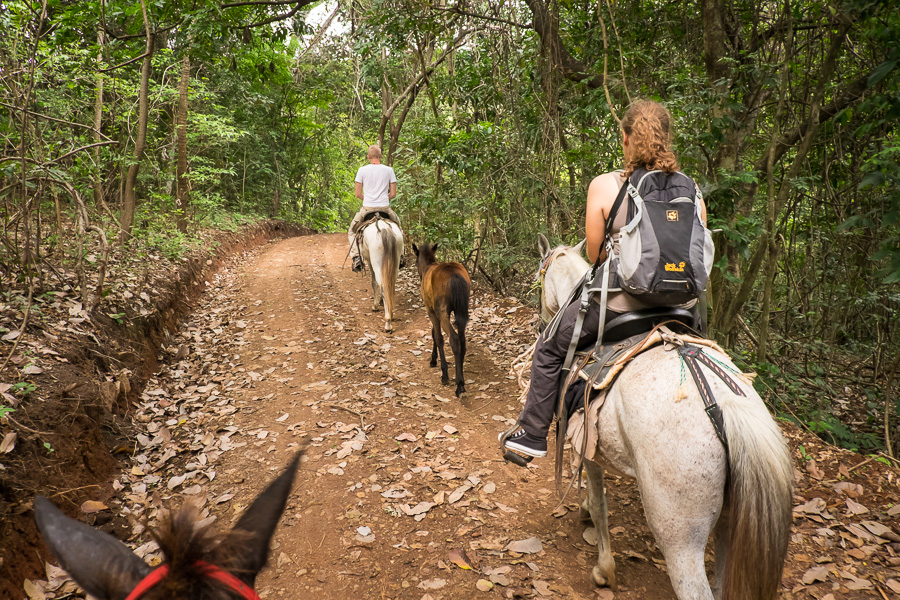
And to top it all off, we even managed the direct bus back to Suchitoto so we avoided the detour a second time!
Recommendation: If you want to learn a little more about the civil war in El Salvador, this is a great introduction. Orlando was very keen to talk and tell the stories, but you do need to speak spanish to get the most out of it. If you aren’t into horseriding, Guazapa tours also do hikes on the mountain.
Booking: You can book any tour with Guazapa Tours through the Amigos del Turistas office in Suchitoto. You just have to let them know before lunch the day before.
Time Required: The horse ride itself took about 4 hours. If you catch the bus that doesn’t do the detour, it takes about 30 minutes to get to the drop-off point from Suchitoto.
Cost: Cost for 1 person = US$30. Cost for more than 1 person = US$20 each. Plus the cost for the bus of course (less than US$1).